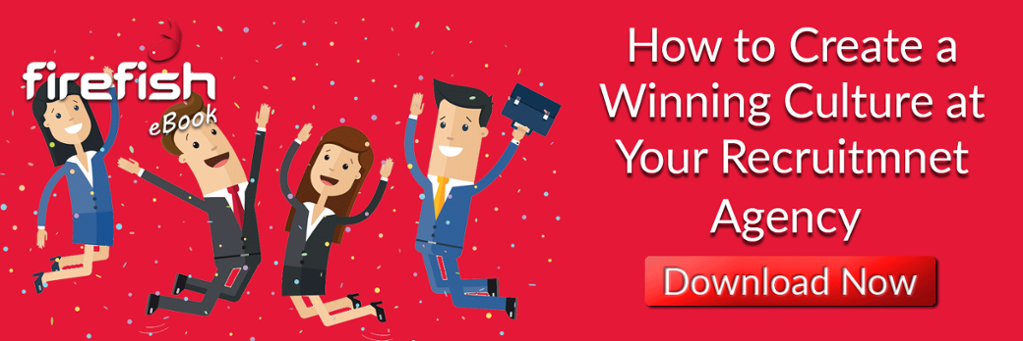When it comes to attracting top talent there are plenty of exciting perks and incentives on offer. Unlimited holidays, ping pong tables, indoor tree-houses – the war for talent has become an arms race. But do these perks and incentives work?
According to Glassdoor, extravagant perks and incentives do attract talent. 57% of candidates report benefits and perks being among their top considerations before accepting a job, and nearly 80% say they would prefer new perks over a pay rise.
 So they have value in attracting talent, but do perks and incentives help to retain those new employees? Glassdoor found that it’s culture and values, career opportunities, and senior leadership that ensure that employees stay for the duration – not extravagant incentives.
So they have value in attracting talent, but do perks and incentives help to retain those new employees? Glassdoor found that it’s culture and values, career opportunities, and senior leadership that ensure that employees stay for the duration – not extravagant incentives.
Which is good news for small companies and startups struggling to pay the bills and attract excellent candidates. Keeping talent is much easier if your culture is compelling and your business offers staff the opportunity to advance their career. After all, an indoor slide is fun and all but it doesn’t promise employees a lucrative financial future.
For recruiters, this type of information is invaluable. You are on the front lines, working with candidates and hearing first hand their thoughts on a job. If, in the sector you're recruiting for, candidates are frequently reporting unhappiness with working hours, tell your clients. You're in a position to be an expert adviser and you should use this opportunity to further define yourself as a knowledgeable specialist within your niche, providing insights and value for both clients and candidates.
Why Incentive Plans Cannot Work…
Way back in the halcyon days, well, in ’93, Alfie Kohn wrote about the problems of work based incentive plans. He suggested several reasons why they don’t work. For Alfie, ‘Rewards succeed at securing one thing only: temporary compliance.’
This thought is a good place to start. Top incentives are used to attract talent, they’re used to encourage a candidate to make a big change – to step out of their comfort zone and take a new job. But for a business to create an environment that retains employees it has to fundamentally alter the way it perceives the effect of rewards and incentives. It needs to think about the less tangible perks such as culture and career advancement. These rewards are what candidates truly want – not expensive baubles.
As Alfie further notes: ‘Rewards buy temporary compliance, so it looks like the problems are solved. It’s harder to spot the harm they cause over the long term.’
Rewards don’t make for a better workplace environment. Instead they mask problems and issues temporarily, and they don’t lead to long term, long lasting change. In fact, Alfie suggests they have even more of a negative psychological effect:
‘Punishment and rewards are two sides of the same coin. Rewards have a punitive effect because they, like outright punishment, are manipulative. “Do this and you’ll get that” is not really very different from “Do this or here’s what will happen to you.”
So, a good question for recruiters to ask is: 'If traditional rewards, and even modern day extravagant perks and incentives don’t retain talent… what does?'
Incentive Categories
For recruiters, it’s important to understand not only what candidates want, but why they want these things. This means that when you feedback to clients you'll be armed with actionable and relevant information.
In an excellent long form article for Agency Central, Matt Atkinson explores incentives staff love. The following infographic comes from his research and writing:

Matt splits employee incentives up into four categories:
- Morale Boosting
- Health Boosting
- Money Boosting
- Creativity Boosting
Matt notes the role of perks and incentives in the workplace is to increase productivity, leading to a higher turnover for a business. In order to do so, employees need to feel engaged. His article explores how a company can target desired behaviours, and use incentives to encourage employees to work within their strengths, in their comfort zone. This leads to more effective and inspired work.
As Matt rightly points out: ‘… the best bosses never lose sight of what it means to be an employee. They’re there for their people, and they help, rather than hinder them. Fostering this kind of atmosphere in your business creates truly the best perk there is, and can lead you to discover the things that will ice the cake of employment in your company.’
Based on this, here are my top three employee incentives that clients can offer to attract (and retain) top talent. This can be an effective list for recruiters to consult when considering a job and how relevant it is to the want and needs of candidates within a specific niche.
1. Trust
Arguably, trust is the most important incentive a business can offer. Candidates want to know they'll be valued by their employer. A good approach to take is to tell them they'll be self-directed – they’ll be able to work to their own schedule, and set their own goals.
This immediately tells a candidate a lot about a business and its culture. Plus, employees are more likely to stay at a company if their day-to-day isn’t micromanaged. Ruth Mayhew suggests: 'When supervisors micromanage employees, employees may believe the only alternative is for them to look elsewhere for career opportunities.'
Trust also leads to employees who feel more able to speak up and share ideas. This promotes innovation, creativity, and future growth for the company as a whole.
2. Negotiable Schedule
Offering candidates flexible hours builds on that sense of trust. It lets them balance their personal and working lives more effectively, leading to happier and more contented workers.
Another option is remote working, but this is a bigger offer. Letting candidates work from home requires more thought, and a consideration of how this impacts on your workplace and its culture.
Then there’s an even more innovative approach a business can take. A workplace can adopt a results-only work environment (ROWE). This means employees are only judged on what they achieve, not the time put in to get there. In many ways this decreases inefficiencies in a workplace as employees can focus on working to their own schedule, benefiting if they manage to complete work more efficiently as they can leave earlier.
HR strategists Jody Thompson and Cali Ressler found productivity increased by an average of 20%, and voluntary turnover rates decreased by 90%, when companies moved from a 40-hour week to a ROWE based model.
‘Companies do not need to manage their people better, they need to manage the work better… It’s easy to make sure everyone shows up at 8:00am. It’s not so easy to get past the clutter and focus on what really matters: results.’
3. Growth Opportunities
Candidates want to know that a company offers them scope for career development. No one wants to be stuck in a dead end job. So, it’s important for a business to show it values and promotes internal growth opportunities.
This will increase employee retention too as current employees won’t feel the need to move on and look for work elsewhere. They will be able to see a future in a company making them work more effectively as they attempt to show their value now and into the future. According to Forbes contributor, Victor Lipman: 'Employees perform best when the environment is conducive to growth...Growth opportunities take many forms, yet all can be of value to employees – and therefore to management.'
When it comes to attracting top talent, make sure the benefits on offer are tailored to the right audience. This not only helps with drawing in applicants, it encourages them to stay long into the future, fostering a relationship between employee and employer based on shared mutual values. And as a recruiter, if you create the opportunity for these relationships to flourish, you'll increase your reputation, further establishing and positioning yourself as a go to specialist in your sector.
Andy Mckendry
Andy Mckendry is a copywriter with an MA in Professional Writing. In the early mornings he is known to gravitate towards the nearest coffee pot.




